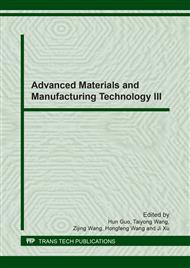p.106
p.115
p.123
p.133
p.142
p.156
p.164
p.174
p.184
The Investigation of the Effect Caused by Deposition Velocity on Bonding Degree within the Structure of FDM
Abstract:
In this paper, the effect of deposition velocity on bonding degree is studied in the aspects of experiment and theory. The experimental results show that the bonding quality of the adjacent filaments is weakened with increasing of deposition velocity. In addition, on the premise of guaranteeing every point in the building process to remain at the optimal temperature, the quantitative relationships between interval and filled area, deposition velocity are investigated by using the technique of deactivate and reactivate element of finite element. On the base of the quantitative relationships, the variable deposition velocity printing method is proposed for the first time. Namely, to reap the best bonding quality of filaments the time of completing one layer can be determined according to the filled area, and then, the optimal deposition velocity can be obtained according to the quantitative relationship between the interval and the deposition velocity. Printing the model at this speed can obtain the part with the best bonding quality between adjacent layers.
Info:
Periodical:
Pages:
142-155
Citation:
Online since:
February 2018
Authors:
Price:
Сopyright:
© 2018 Trans Tech Publications Ltd. All Rights Reserved
Share:
Citation:


